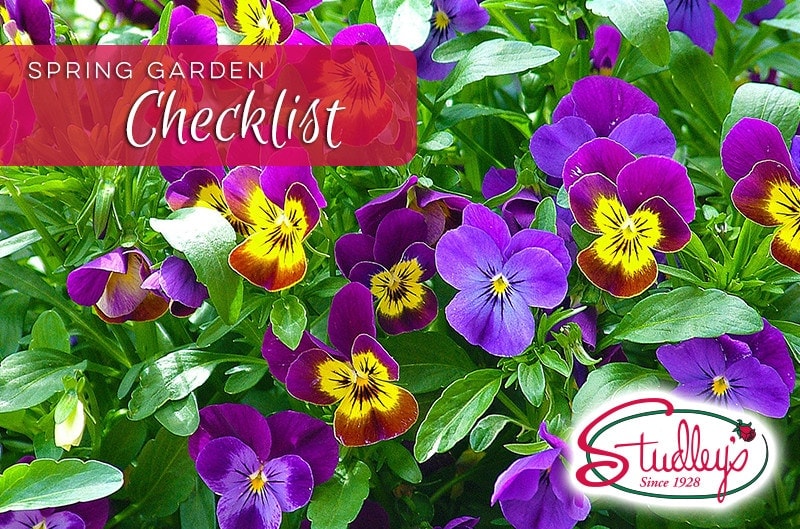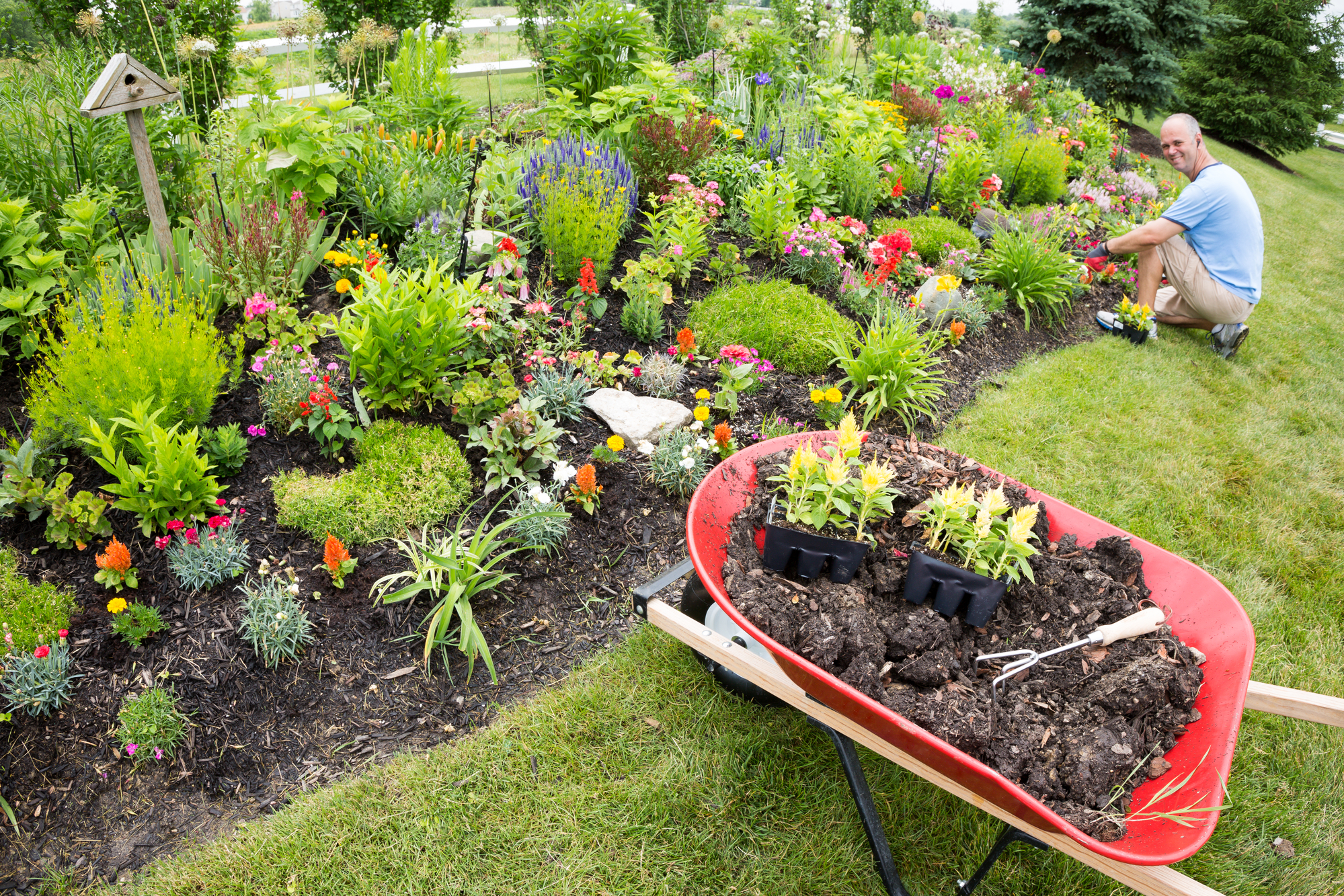We have your spring garden checklist to get you organized and started on tackling those outdoor chores just as soon as Mother Nature allows!
Here in the northeast, we’re still subject to wild temperature swings and unpredictable weather conditions, so working on warmer and dry days, you can begin to check off the items on your list.
Clear Debris
As the snow melts, remove fallen branches and other debris from the lawn. When it is time to mow, you can hop on the tractor and go!
Prune
Not every tree or shrub should be pruned in the spring. Check out the Old Farmer’s Almanac for a handy “what to prune and when” guide.

Prepare Beds
Start by raking out any loose surface debris like dry leaves and removing dead or fallen plant material (leave woody stalks on evergreens or hydrangea). Turn the soil to allow air and moisture to reach the roots. It’s ok to turn wet, decaying leaves or mulch right into the soil. If you haven’t fertilized your beds in the last couple of years, we recommend amending the soil by turning in someorganic fertilizer, especially for vegetable gardens. Your local garden center or garden supply store will offer a ready compost material that can be purchased by the truckload. After preparing your beds, give them a fresh edging for a neat look and to keep grass out and mulch in. Top with fresh mulch as needed for a 2″-3″ layer that will protect roots from harsh summer sun and the following winter snow.
Pull Weeds
Whenever possible, pull weeds as soon as growth appears. The less time they have to establish and reseed, the better. Repeat throughout the season (sorry).

Divide Perennials
If some of your perennials were overgrown and suffered or were crowded their space last year, you can divide them as soon as the ground thaws and they begin to sprout. When early growth starts to show, dig wide and deep to keep as much of the root ball in tact as possible and then carefully divide with a sharp knife or spade on larger plants. Replant one division in the original space and you’ll see new vigor this year. Plant the remaining divisions elsewhere or pot up some up for a friend!
Go Shopping!
Those green thumbs have been patient all winter. Watch our Facebook page for early spring arrivals throughout the coming weeks for announcements of new annuals, perennials, trees and shrubs. Ask us about our seed offerings – they have been selected as optimum success in our zone and our pros can tell you how and when to get them started. As a rule of thumb, annual plants (one season) are best planted after the danger of frost, usually Memorial Day weekend. Perennials, trees and shrubs (that come back every year) can be planted as soon as the ground thaws. Ask us how to get a jump on the season by starting annuals and vegetables in containers!
Of course if DIY is not your thing, Studley’s offers complete garden maintenance including mulching, pruning, fertilizing, transplanting, weeding and renovation, as well as complete lawn care services with organic seasonal lawn treatments. All you have to do is contact Studley’s Landscaping Team today at 603.332.4565 and then sit back and enjoy your spring and summer!
Need inspiration? Visit our Garden Center page for purpose-specific plant lists and a tree planting demo video.
My Pro Tip:
Force some spring blooms indoors! When temps are above freezing, choose a branch with plenty of swelling buds and cut 10″-12″ selections with sharp pruning shears. Bring them inside, and holding them under running water, cut about an inch off the bottom of the stem, and then split the bottom of the stem with a knife. Place them in a tall vase of water and set in a cool location with medium light. It can take a few weeks to force blooms indoors. Change the water every few days and mist buds with water to keep them from drying out. Once the buds start to open, move to a brighter location, but avoid direct sunlight and enjoy long-lasting spring blooms!
See you at Studley’s!






